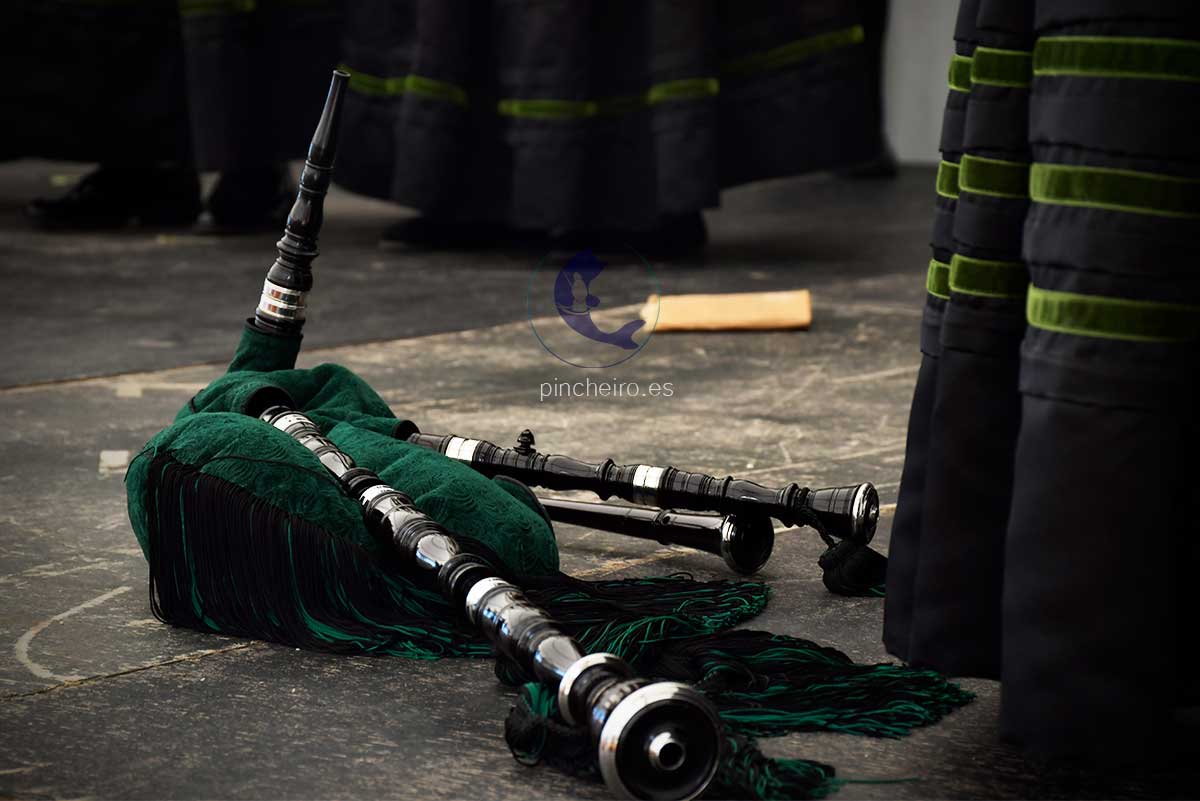Pilgrimages are a defining element of Galicia. On a specific date of the year, the people of a parish gather around a chapel or cruceiro to celebrate the religious services around a saint: Mass, procession, bids or auctions… Once the rite has been completed, the profane celebration begins: a meal in the fields, bagpipe music, dancing to the sound of the brass band, etc.
In Pobra there is a festival that resembles a “small” pilgrimage. This is the festival of the cruceiro de Moldes, which is held every year on the second Sunday in May at the boundary that divides the municipality of Pobra from the municipality of Ribeira on the road to Mount Curota. There, under a tree, is a beautiful Chapel cross whose images look towards Pobra. The cruceiros, crossroads, are signs of Galicia’s identity and artistic displays of great value.
Legend has it that hundreds of years ago the crossing faced the opposite way, that is, towards the Corrubedo dunes. There, instead of the dunes, there was a people immersed in evil who did not heed the repeated calls for conversion. This caused a storm to drown the village and its inhabitants with a giant mass of sand, giving rise to the famous Corrubedo or Olveira dunes. Seeing this Dantesque spectacle, the Virgin decided to turn away while exclaiming: “Non quero ver tal!!!” (I don’t want to see it!!!) . From that moment on, the place near the dunes was given the name of “Bretal”, and the Virgin preferred to remain looking towards Pobra forever.
The people of Puebla, grateful for this favour, come to the crossroads on the second Sunday of May to carry out the religious and profane rituals. They pray in front of the cross that oozes history, art and tradition. As a chapel cruceiro, it has a beautiful image of the seated Virgin inside, showing the child Jesus seated on her knees and holding an apple in her hands, symbolising that she is the mother of God and co-redeemer of humanity, the new Eve who returns humanity to the paradise from which it was expelled by the sin of the old Eve when she ate the apple. The image is of Gothic masonry, beautifully finished. Likewise, the crucified Christ that crowns the transept chapel is a 15th century Gothic work with exceptional lines and expressions, typical of the late Gothic spirituality of the 15th century, that is to say, Christ’s expression is placid and serene because he fulfils the will of the Eternal Father.


